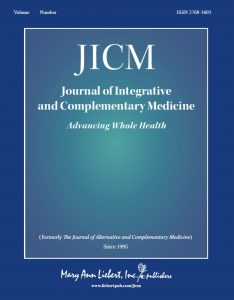Publications

Exploring the Effects of Standardized Soft Tissue Mobilization on the Viscoelastic Properties, Pressure Pain Thresholds, and Tactile Pressure Thresholds of the Cesarean Section Scar
Authors: Isabelle Gilbert 1, 2, Nathaly Gaudreault 1, Isabelle Gaboury 2
Affiliations:
- School of Rehabilitation, Faculty of Medicine and Health Sciences, Universite de Sherbrooke, Sherbrooke, Canada
- Department of Family Medicine and Emergency Medicine, Faculty of Medicine and Health Sciences, Universite de Sherbrooke, Sherbrooke, Canada
Journal: Journal of Integrative and Complementary Medicine - April 2022, Volume 28, Issue 4, Pages 355-362 (DOI: 10.1089/jicm.2021.0178)
-
Field & Applications:
- Medical
- Clinical trial
- Treatment evaluation
- Skin / Dermatology
- Complementary and Alternative Medicine
- Women's health
Background: Objectives of soft tissue mobilization applied to cesarean section (C-section) scars are to decrease stiffness and to reduce pain. Research investigating these effects is lacking.
Materials and methods: The authors conducted a descriptive, exploratory, proof-of-concept clinical study. Women aged 18 to 40 years who had undergone at least one C-section were recruited. A trained osteopath performed standardized mobilization of the C-section scar once a week for 2 weeks. Scar quality and pain characteristics, viscoelastic properties, pressure pain thresholds, and tactile pressure thresholds were measured before and after each session. Paired Student’s t-tests and Friedman’s test with Dunn–Bonferroni adjustment were performed to assess the immediate and short-term effects of mobilizations. Kendall’s W and Cohen’s d were calculated to determine effect sizes over the short term. Simple bootstrapped bias-corrected and accelerated 95% median confidence intervals were computed.
Results: Thirty-two participants completed the study. The Patient and Observer Scar Assessment Scale questionnaire revealed differences with small and moderate effects for stiffness (p = 0.021, d = 0.43), relief (p < 0.001, d = 0.28), surface area (p = 0.040, d = 0.36), flexibility (p = 0.007, d = 0.52), and participant opinion (p = 0.001, d = 0.62). Mobilizations increased elasticity (p < 0.001, W = 0.11), decreased stiffness (p < 0.001, W = 0.30), and improved pressure pain thresholds (p < 0.001, W = 0.10) of the C-section, with small to moderate effects. The results also showed decreased tone and mechanical stress relaxation time, as well as increased tactile pressure thresholds at the different measurement times (p < 0.05), but trivial effect sizes (W < 0.10). Creep showed trivial effect and no significant difference (p = 0.09).
Conclusion: This study showed that two sessions of mobilization of C-section scar might have a beneficial effect on some viscoelastic properties of the C-section as well as on pain. Some variables of interest useful for future empirical studies are highlighted.
Keywords: cesarean section scars, stiffness, pain, manual therapies, proof of concept
This study found that two sessions of soft tissue mobilization could have an effect on the viscoelastic properties and pain thresholds of C-section scars. This is the first study that the authors know of to demonstrate objectively the potential for the use of soft tissue mobilization to improve viscoelastic properties with treatment of C-section scars. This study provides sufficient evidence and variables of interest to move on to comparative study designs.


